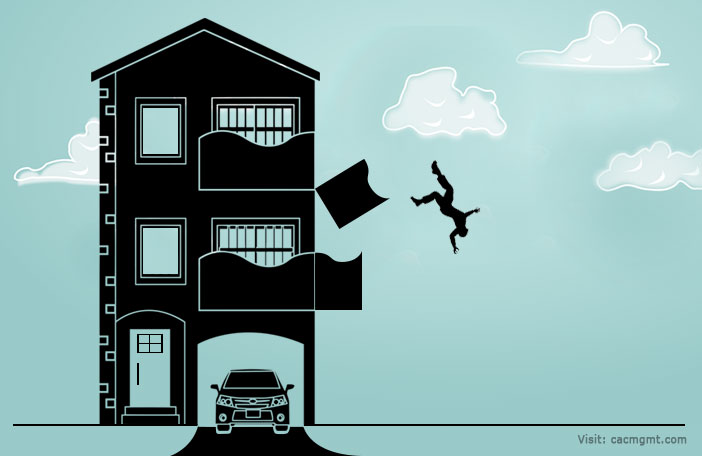Below is a helpful tip from the Davis-Stirling.com Newsletter by ADAMS | STIRLING PLC regarding board options for failing balconies.
QUESTION: The board at one of my communities knows they need balcony work done; however, one of the members is concerned that SB 326 is dictating that once the inspection report is submitted to the city they will need to address failing components immediately, producing a financial strain on the association. Does SB 326 require boards to fix components immediately or simply provide members with a plan? –Chris C.
ANSWER: The timeline for making repairs depends on the seriousness of the damage. The financial strain for repairs will not compare to the strain if a balcony were to collapse and injure (or kill) someone. Safety always comes first.
Inspector’s Report. Once signed into law, SB 326 became Civil Code §5551. The statute requires inspectors to issue a written report identifying (1) load-bearing components and associated waterproofing systems; (2) their current physical condition and whether they present an immediate threat to the safety of residents; (3) their expected remaining useful life; and (4) recommendations for repairs. If structural damage poses an immediate threat to the safety of others, the association is required to prevent access to the affected balcony/walkway/stairwell until repairs have been made.
Real World Example. This occurred with one of my associations. After a balcony partially collapsed under the weight of an owner, the board had yellow tape placed outside the sliding glass doors of every balcony in the development with warnings that residents not use their balconies. The problem was traced to ceramic tile installed by the developer on all the balcony floors. It made for beautiful flooring, but over the years water seeped through the grout into structural elements, causing dry rot, which weakened the balconies. The damage was hidden until one of the residents stepped onto her balcony and went through the floor. Subsequent inspections revealed that all balconies suffered dry rot.
Cost to Repair. Even though there was an immediate threat to safety, repairs were delayed until specifications could be prepared and contractors submitted bids. The projected cost came in at over $1 million. The association did not have money in their reserves for balconies and the board was forced to levy an emergency special assessment. Owners were not happy with the assessment and resisted payment. Repairs were further delayed when one owner filed a lawsuit to stop the assessment. I defended the association and presented the urgent safety issues to the court and prevailed. Once litigation concluded and assessments collected, repairs commenced. I suspect many associations will face similar situations when they inspect their balconies.
RECOMMENDATION: Once the current emergency is over, boards are not required to (i) include instructions for logging into Zoom meetings, (ii) provide a contact person for technical assistance, or (iii) conduct roll call voting. Even so, these should be considered best practices and followed whenever virtual meetings are conducted.
DISCLAIMER. The Davis-Stirling.com Newsletter by ADAMS | STIRLING PLC provides commentary only, not legal advice. For legal advice, you’ll need to hire legal counsel. You can hire ADAMS | STIRLING PLC; Keep in mind they are considered corporate counsel to associations only.

